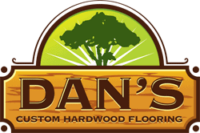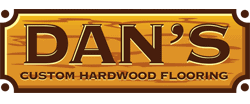Explaining the Mixed-Width Hardwood Trend
The mixed-width hardwood trend is exactly what it sounds like. Hardwood flooring installers are installing hardwood that is made of planks of several different widths. Obviously, the standard option is for every plank of wood to be the exact same width and length and the same type of wood. The mixed-width trend has been growing for several reasons. It feels very new and modern, and that’s how it can make your home look; however, the trend has roots that are much older.
The History
When 18th and 19th century homes had hardwood floors out of necessity, they were often just trying to cover up dirt or concrete floors. So, they made their hardwood floors out of whichever wood could be harvested nearby. They would harvest the wood from nearby trees and use as much of the tree as possible. Therefore, if they had to cut planks into differing widths, they would. That led to many floors having planks of all different types of wood and all different widths. These floors are now iconic in rustic and farmhouse design.
Homeowners in the 21st century who want to replicate this design have more options than ever.
Finding Mixed Planks
You can find mixed-width planks in one of two ways. You can buy a batch of hardwood planks from a supplier that have been designed for a mixed-width application. There’s an advantage to this because the wood will all be the same wood from the same batch. It will be stained and finished the same as well if you buy prefinished hardwood.
If you want to save some money or if you want something more eclectic, you can choose to mix the widths yourself. You can buy several small batches of wood that add up to the amount of wood you need. They should obviously be planks of different widths; you can even choose planks of different lengths as well. Installing them could be something of a headache because you’ll have to do new measurements for every row of planks. You’ll also likely need to cut several planks to make them fit. However, what you end up with will be truly varied.
When you choose to mix your own batch of wood, you’ll also have some difficulty matching the exact tones of the wood if you buy prefinished hardwood. Each batch of wood will be slightly different even if they’re finished the same way. If you sand, stain, and finish the wood after it’s installed, you won’t have that issue.

